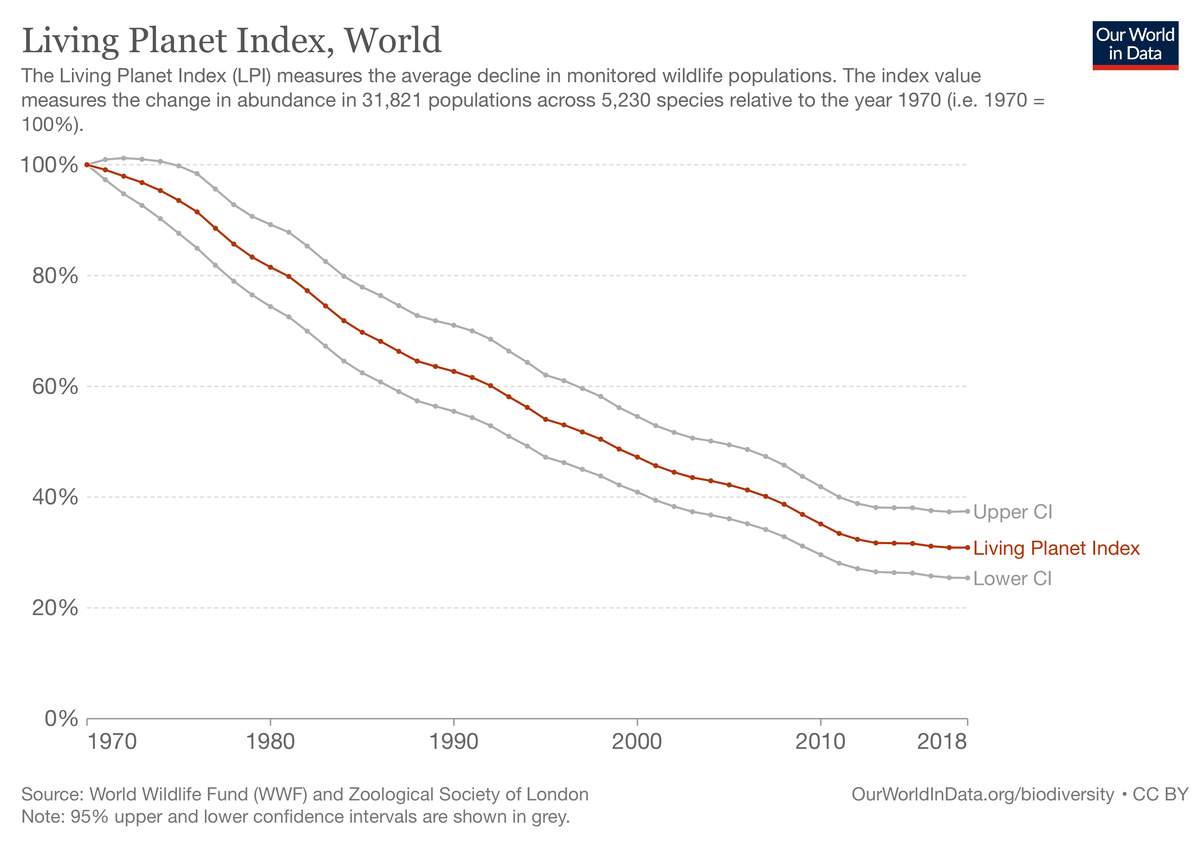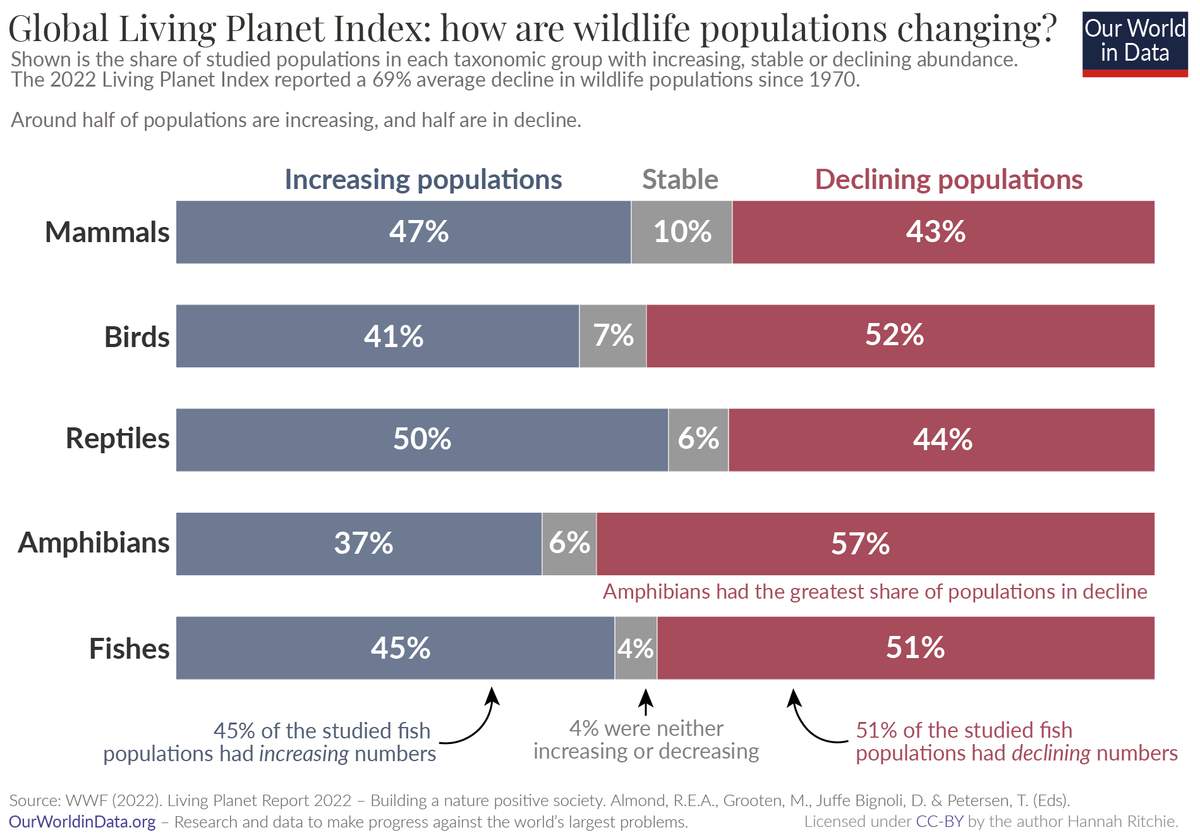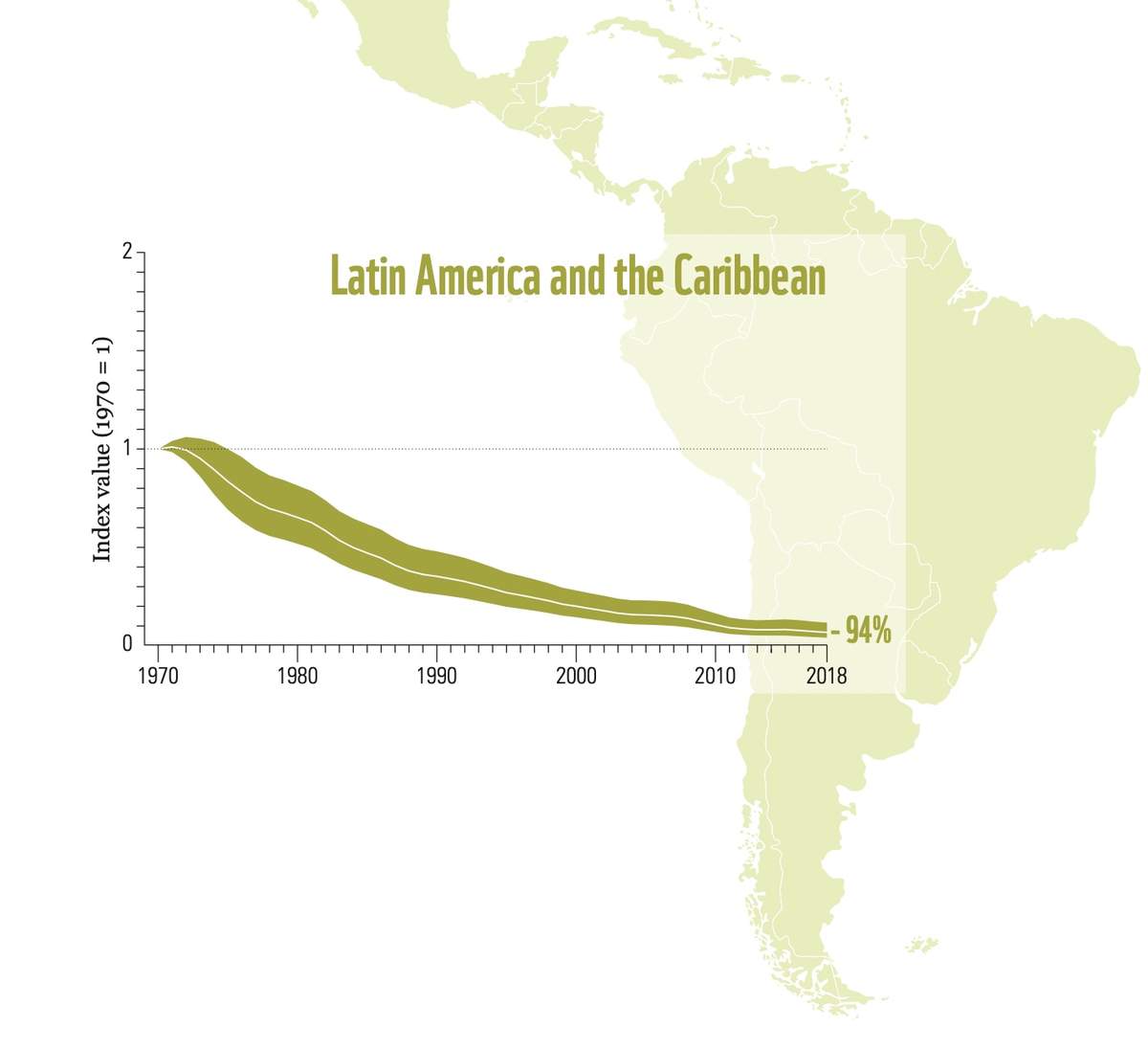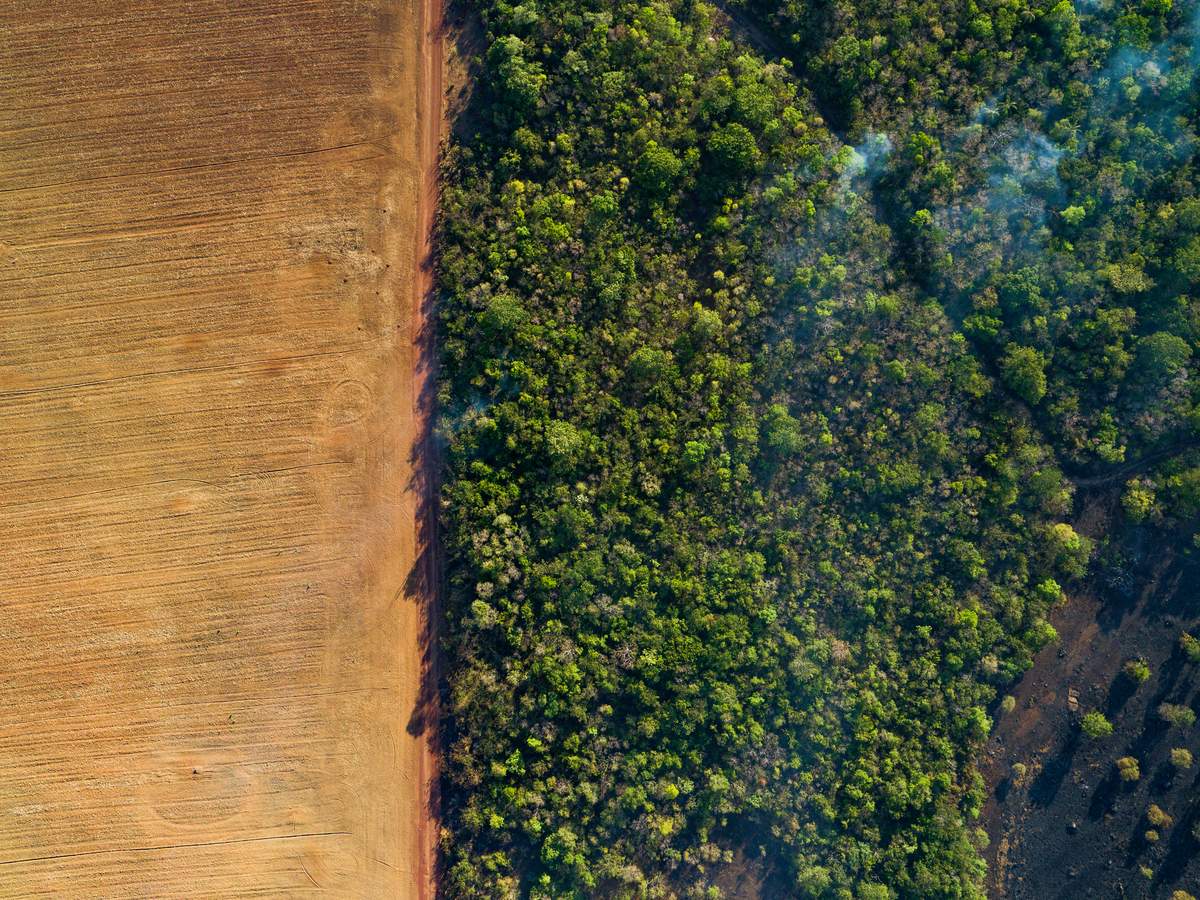A recent report by the World Wildlife Fund (WWF) and the Zoological Society of London (ZSL) shows that, on average, wildlife numbers have dropped sharply since 1970. The main cause of the drop is human activity. The report is alarming, but there are some signs of hope.
Biodiversity
The word biodiversity comes from “bio”, meaning life, and “diverse”, which means different. Over millions of years, life has changed on Earth to take on many, many different forms – from tiny forms of life like bacteria, to huge ones like trees or whales. Protecting this biodiversity, or wide range of life forms, is seen as extremely important in keeping Earth healthy.

(Source: [CC BY 4.0], OurWorldInData.org.)
The Living Planet Index (LPI) report is released every two years by WWF and ZSL. The report tracks the best efforts of scientists to count wildlife populations around the world. The word population here means groups of the same kinds of animals (species) living in the same general area (or the size of those groups).
The report doesn’t look at all wild animals, only vertebrates – animals with a backbone. These include mammals, birds, fish, reptiles, and amphibians. The report studied 5,230 species found in 31,821 populations around the world.
This year’s LPI says that, on average, wildlife populations dropped by 69% in the 48 years from 1970 to 2018. That’s a huge drop, and it’s very worrying. Marco Lambertini, who leads WWF, said, “The message is clear and the lights are flashing red.”

(Source: Hannah Ritchie, via [CC BY 4.0], OurWorldInData.org.)
The LPI isn’t reporting numbers of animals. It’s reporting the average change in the size of animal populations over time. The numbers for all species or populations didn’t drop by 69%. In fact, only about half of the populations studied are dropping. But their losses are so extreme that the average drop for all populations was 69%.
Some kinds of animals are in worse trouble than others. Populations of vertebrates that live in fresh water (not oceans) have dropped by 83%. The numbers of sharks and rays in the oceans have gone down by 71%.

(Source: WWF/ZSL.)
Central and South America and the Caribbean had the greatest population losses – a drop of 94%. Next came Africa, with a 66% drop, followed by Asia and the Pacific with a 55% drop. Europe and North America showed smaller losses. These areas probably had greater losses before 1970.
Most of the losses are related to human actions. The biggest problem is the loss of wild areas to growing cities, and activities like farming and deforestation. Hunting, poaching, overfishing, and pollution are also big challenges. Climate change is a growing problem, and may soon be the biggest one.

(Source: © Day’s Edge Productions / WWF-US.)
But there are some hopeful signs. About half of the populations are stable or growing. In some cases, human efforts to protect animals are working. For example, nests of loggerhead turtles in Chrysochou Bay, Cyprus rose by 500% from 1999 to 2015 because of efforts to protect them.
An international meeting on biodiversity this December is seen as extremely important. The meeting, called COP15, is being run by the United Nations in Montreal, Canada. The meeting’s goal is to get countries to agree to new guidelines to help stop the loss of animals, plants, and wild lands by 2030.
😕
This image has not been loaded because of your cookie choices. To view the content, you can accept 'Non-necessary' cookies.
About half of the populations are stable or growing, sometimes thanks to human efforts. Nests of loggerhead turtles in Chrysochou Bay, Cyprus rose by 500% from 1999 to 2015 because of efforts to protect them. Above, newly hatched sea turtles released by volunteers on Cyprus in September.
“Our future depends on reversing the loss of nature just as much as it depends on addressing [working to fix] climate change,” says Carter Roberts, who leads WWF in the US. “And you can’t solve one without solving the other.”
